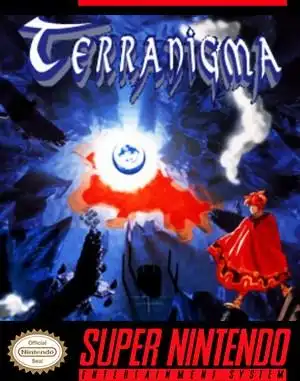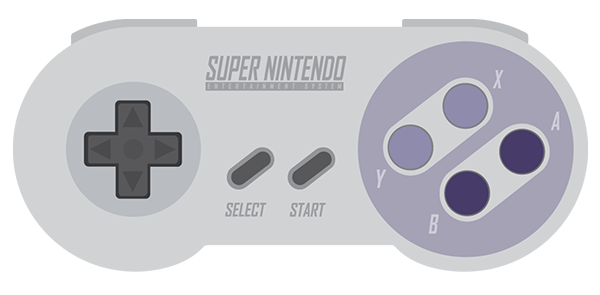Finding a truly special retro game years after its original release feels like discovering buried treasure. For many North American SNES fans, Terranigma is exactly that kind of gem. Released in Japan in 1995 and Europe/Australia in 1996, this ambitious action RPG from Quintet (the team behind Soul Blazer and Illusion of Gaia) sadly never made it to the U.S. shores officially.
But thanks to fan translations, emulation, and the passion of the retro community, the legend of Terranigma has grown, cementing its status as one of the console's finest, albeit most elusive, titles. Let's dive into what makes this game so captivating and why it's worth seeking out today.
The Legend of the Lost SNES Gem
Terranigma holds a unique place in the SNES library. It's often considered the spiritual successor, or even the conclusion, to a loose trilogy of action RPGs by developer Quintet, following Soul Blazer and Illusion of Gaia. While not directly connected in plot, they share themes of creation, destruction, and rebuilding worlds.
The game's absence in North America is a persistent mystery, often attributed to Enix's U.S. branch closing around that time or, less likely, perceived religious themes. Whatever the reason, it left a void in the official SNES lineup, making its discovery later on all the more impactful for those who finally got to play it.
A World Reborn: Story & Scope
The narrative of Terranigma kicks off with Ark, a mischievous boy from the subterranean village of Crysta. His world is literally the "underside" of the planet. When he opens a forbidden box, he inadvertently freezes everyone in his village except the Elder. To save them, he must travel to the "overside" – the surface world – which is currently a barren, lifeless sphere.
Ark's initial quest is monumental: resurrect the surface world. This isn't just a plot device; it's the core gameplay loop for a significant portion of the game. You start by reviving plant life, then animals, then birds, and eventually, humanity itself. As you bring life back, you witness the world evolve and societies develop, from prehistoric times through various technological ages.
This grand, almost god-like scope, combined with a deeply personal journey for Ark and a narrative that touches on complex themes like evolution, science, religion, and the cyclical nature of life and death, gives Terranigma a maturity rarely seen in 16-bit games. The story has twists and turns that keep you invested until its poignant, open-to-interpretation ending.
The Feel of Creation: Gameplay & Combat
At its heart, Terranigma is a top-down action RPG, drawing comparisons to The Legend of Zelda. You control Ark in real-time combat, primarily using a spear. What sets it apart is Ark's versatile moveset. By combining movement (standing, running, jumping) with the attack button, you can perform different attacks like a standard jab, a powerful dash thrust, a spinning attack, a jump attack, and a dive attack.
These attacks feel fluid and responsive, making the moment-to-moment combat engaging. Learning which attack works best against different enemy types adds a strategic layer. The controls are highly customizable, a nice touch for the era.
However, the game isn't without its quirks. The magic system, which relies on collecting "Magirocks" and converting them into single-use items, feels somewhat tacked on and isn't well-explained in-game. Many players find it unnecessary for most of the journey.
Difficulty is generally well-paced, but there's one infamous mid-game boss, Bloody Mary, who presents a sudden, brutal spike that feels out of character for the rest of the game. Overcoming her often requires grinding or exploiting the clunky magic system, a frustrating roadblock in an otherwise smooth experience.
Beyond combat, Terranigma features varied dungeons filled with environmental puzzles and platforming elements that require using Ark's unique abilities like climbing or swimming. There are also fascinating town-building side quests where your actions can influence the development of human civilization.
More Than Pixels: Visuals & Sound
For a late-era SNES title, Terranigma boasts some impressive presentation. While some character sprites and environments can look a bit generic, key moments are highlighted with beautiful cutscenes using pseudo-3D and Mode 7 effects. Battle animations for Ark are particularly smooth and satisfying.
Where Terranigma truly shines, however, is its soundtrack. Composed by Miyoko Takaoka and Masanori Hikichi, the music is widely considered one of the best on the Super Nintendo. It features incredible variety, from relaxing overworld themes to tense dungeon tracks and epic boss battle music. The score perfectly complements the game's emotional narrative and vast scope, enhancing every moment. Many players rate the soundtrack a perfect 10/10, and it's easy to see (or rather, hear) why.
Why It's a Must-Play
Despite a few minor flaws like the magic system and a difficulty spike, Terranigma's strengths far outweigh its weaknesses. Its ambitious, thought-provoking story, unique world-building mechanics, engaging core combat, and magnificent soundtrack combine to create an experience unlike any other on the SNES. It's a game that sticks with you long after the credits roll.
For retro gamers who appreciate deep narratives, action RPG gameplay, and the charm of 16-bit pixel art and music, Terranigma is an essential play. It's a testament to the creativity and technical skill of developers pushing the boundaries of the hardware.
Finding Your Way to Crysta
Since Terranigma wasn't officially released in North America, playing it requires a bit of effort:
- Emulation: This is the most common method. You'll need a SNES emulator (like SNES9x or RetroArch) and a ROM of the game, ideally a fan-translated English version.
- Flash Carts: Devices like the SD2SNES (FXPAK Pro) allow you to load ROMs onto an actual SNES console, offering an authentic hardware experience with the English patch.
- Reproduction Carts: Fan-made physical cartridges exist, though their legality and quality can vary.
Whichever method you choose, ensure you're using a high-quality fan translation, as they make the rich story fully accessible.
Frequently Asked Questions
Q: Is Terranigma part of a trilogy? A: Terranigma is often considered the third game in an unofficial trilogy by Quintet, following Soul Blazer and Illusion of Gaia. While they share thematic links and developer, their stories are largely independent.
Q: Why wasn't Terranigma released in North America? A: The most common reason cited is the closure of Enix's U.S. subsidiary around the time of the game's planned release.
Q: Is Terranigma difficult? A: The overall difficulty is moderate, but there is a notorious difficulty spike with the Bloody Mary boss fight mid-game.
Q: Is there any chance of an official re-release or remaster? A: There have been fan petitions and discussions, but as of now, there has been no official announcement from Square Enix (who now holds the rights) regarding a re-release or remaster of Terranigma.
Have you played Terranigma? What are your memories of discovering this lost classic? Share your thoughts in the comments below!


